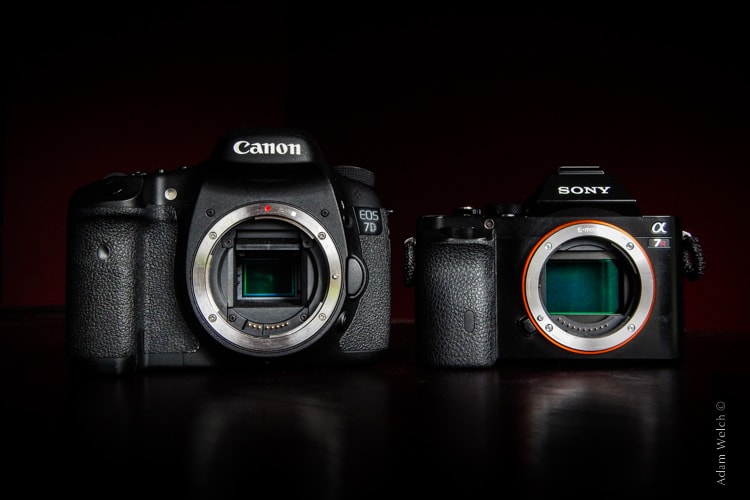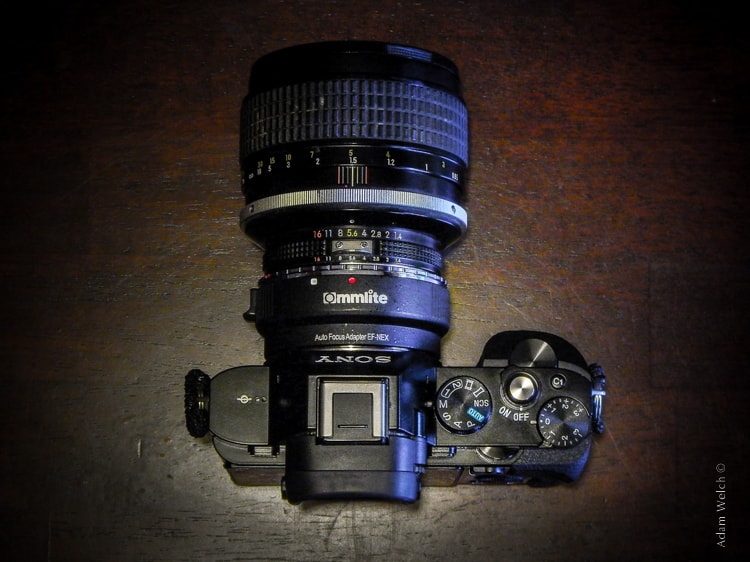Crossing Over: Why I Switched From DSLR to Mirrorless
There are few relationships more beautiful and more pure than the one that exists between the photographer and his or her camera.
That may be a stretch into the dramatic but not by very much. What is certain is that in order to be a “serious” photographer, and by serious I mean someone who is truly pursuing the practice as an art/career, there has to be some type of symbiosis. Separately, the camera and the photographer are very much useless… like a clock without a craftsman.
When it comes time for choosing a camera, a lot of thought and research (and anxiety and tears and gnashing of teeth) usually goes into deciding what will best fit the needs of the photographer in the most situations. The camera will likely be one of if not the biggest investments you will make as a photo maker. It’s understandable why the importance of purchasing a new camera shouldn’t be understated.

But there’s something that goes beyond merely getting a new camera. And that is switching camera systems completely. Yes, I have taken the deep breath that comes before the plunge and dove head first into a completely foreign concept… for me at least.
I have switched from a dSLR to a mirrorless camera!
More specifically, from an APS-C (crop sensor) Canon 7D Mk1 dSLR to a full frame mirrorless Sony a7R. This was a monumental crossover for me both in terms of the physical differences between the two cameras as well as the personal shift I am beginning to make in my own photo work.
The decision was… taxing. Taxing is the best choice of wordage I can conjure at the moment to describe the anxiety brought about by the self-perceived magnitude of the change I was making in my gear. I knew it would either be a wonderful and necessary next step in my photographic journey or a monumental waste of time and resources.
So this will be a somewhat personal narrative that will give you a glimpse into my thinking on why I decided to go mirrorless and how the journey has been so far. I will share with you the reasoning behind my switch, the process by how I chose the Sony a7R, and finally I will give you my honest opinion of the experience so far.
Why I Decided On The a7R
First, let me give you some background so you will understand what I was looking for in a new camera and why I ultimately decided on the a7R. I would consider myself a generalist as far as my photography is concerned. Although the majority of my work is centered on nature and landscape work you are still able to find street and still life or even a portrait or two thrown into my portfolio.
Still, I knew what the key features were that I was looking for in my new camera body. These were the features I had to have:
- Full-frame sensor
- High megapixels
- Solid build
- Smaller (physically) than my current camera
My Canon 7D has been a tank of a camera. Nearly five years of solid service without so much as a flinch of a malfunction. Honestly, even the body still looks nearly new. It has withstood hundreds of miles of hiking trails and backcountry camping trips in all kinds of weather conditions.
-
Crop Sensor vs Full-Frame
The problem… well, not really a problem but more of a relative shortcoming is that it is a cropped sensor (APS-C). I was a different photographer five years ago when I purchased the Canon. Back then I had no need for a full frame.
Even now there a many professional photographers who shoot cropped sensor cameras. For me, I have begun doing a lot of night photography and the cropped sensor of the 7D though very capable, simply wasn’t up to the task of the high ISO settings I find myself using more frequently.
I also need high resolution and critical sharpness for my landscape work. I know some of my clients will be requesting prints upwards of 24″x30″ in size and pixel peepers would come hunting. My current 18mp would be the absolute minimum acceptable and I was looking for 20mp and above. I also wanted to be able to get the best use of any higher end lenses in which I might acquire in the coming months.
-
Solid Build
Solid build might be a no-brainer when in the market for a new camera. This is especially true when you intend to take said camera into harms way as often times happens while shooting landscapes. I needed something that could handle a little moisture and a bump or two here and there. Plastic body’s were of course out of the question. I preferred something aluminum or magnesium alloy. This leads me to my next requirement.
-
Smaller Package
Finally, I was looking for the absolute smallest package possible that still squeezed in all of the aforementioned requirements. I know I know…I can’t have everything but that didn’t stop me from trying. When you’re hiking on multi-day camping trips space in your pack comes at a premium. My 7D isn’t huge and isn’t overly heavy but any space or weight savings is always welcomed.
Now you’re up to speed on what I was looking for when I finally settled…no, “settled” implies that I compromised. I suppose the correct word would be “ended.” I ended my search with the Sony a7R because it met all the requirements that I knew I needed in my new camera body. Due to the lack of reflex mirror (hence the mirrorless) the a7R is physically about one inch thinner than and 50% lighter than the 7D body. It has a full-frame 36.4mp sensor and great low light ratings. Sony has conspicuously removed the “weather sealed” phrasing from it’s marketing for the a7R. Be that as it may I have still read enough reviews from seasoned travel photographers extolling its performance in wet and grimy conditions to convince me it is tough enough for my uses.

Size difference between the Canon 7D and the Sony a7R. Top view.
It really did offer everything I needed and more. I even liked the near-retro styling of the housing. I was literally sold on all points.
Fast forward two weeks. After fourteen days with the a7R I am feeling more and more certain I made an extremely wise decision. The camera has so far surpassed my expectations in all aspects that were important to me. The image quality is absolutely superb. The camera itself is well built and very solid. Admittedly there is still a lot of acquainting to be done between myself and my new photo tool. I have learned the basic functions of all the buttons and dials and have programmed some custom mapping of my own. My preliminary low-light work has been outstanding and I can’t wait to get this camera out in the field for some legitimate testing. It still feels strange to me that something so comparatively smaller than what I was used to can be such a powerhouse.
Using Other Lenses
An added advantage was that I didn’t need to start from scratch and buy all new lenses. A Commlite lens mount adapter enables me to use my EF mount Canon lenses with the a7R. Autofocus is actually faster than I thought it would be but isn’t quite as fast with my native Sony 24-70mm Zeiss F/4. Furthermore, my twenty-five year old Nikkor Ai-S manual focus lenses, which I had previously adapted for use with my Canon, also produce beautiful images when paired with the a7R.
Shown here with a “Frankenstein” combination of a Nikkor 85mm Ai-S adapted to Canon EF which then fits the Sony E to Canon EF adapter.

Note: I was extremely impressed with the performance of my Canon 50mm F/1.4. So much so that I will likely not purchase a native Sony 50mm prime at least for the time being.
I am just beginning to scratch the surface of the capabilities of my new camera setup. It has been an exciting time so far and I know it will only improve as I become more familiar with all the little nuances of the system. Except for the first purchase of my 7D this was the biggest investment I have made in the hopes of advancing my photography.
What have I learned from my experience of moving from a mid-range crop sensor dSLR to a high-end full frame mirrorless camera? In short, don’t be afraid of moving on to something new.
If you are currently struggling with a similar situation remember this: you have to take chances if you want to succeed. Sometimes taking chances means making a big change in how you’re accustomed to working. Don’t let yourself be mired down with fear and self doubt. At the same time you must understand that just throwing money into gear won’t transform you into a better photographer. Be honest with yourself about your capabilities and then find the gear that fits your needs and leaves room for growth.
Know yourself. Do your research. Be realistic. Don’t be afraid of making a mistake.
